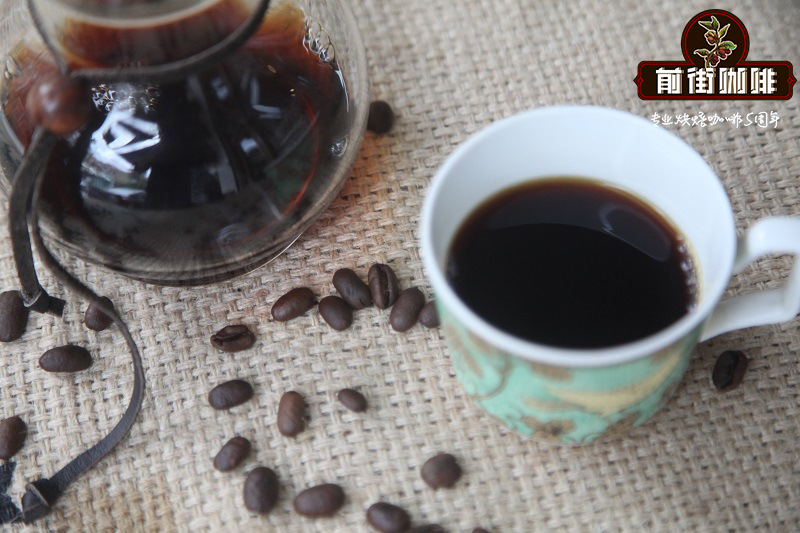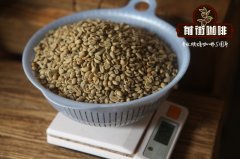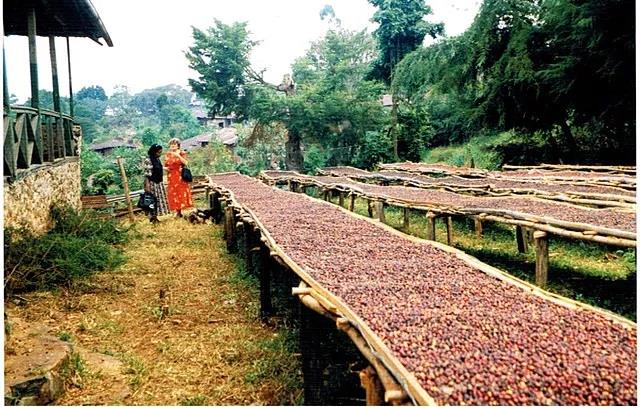Guodingding Cooperative Solar Yega Snow Coffee G1 Ethiopian Coffee introduces coffee suitable for hand brewing

Professional coffee knowledge exchange More coffee bean information Please pay attention to coffee workshop (Weixin Official Accounts cafe_style)
Ethiopia Sun-baked Yerga Sherphine Ding Village Alim Bukato Smallholder G1
Ethiopia Natural Yirgacheffe Banko Gotiti G1 – Alemu Bukato
Coffee Review
Sunlight: February 94, 2018, December 94, 2017, hand-brewed coffee beans recommended
Qianjie Coffee [Hand brewing tutorial] 15g powder, medium fineness grinding (sugar size), v60 filter cup, 90 degrees-91 water temperature, the first injection of 30g water, 30 seconds of stewing, injection to 105g water, 135g water cut, wait for the powder bed water to drop to half, then inject water slowly and evenly until 225g water, finally shake the filter cup to increase extraction, water powder ratio 1:15, extraction time 2:00
Flavor Short Review:
Dry aromas are sweet berry, mango and peach aromas.
Intense blueberries, strawberries, grapes, mangoes and peaches when sipped
The flavor is thick and strong,
Chilled, it resembles a glass of juice mixed with blueberries, grapes and peaches.
The aftertaste is long berries and flowers
The sweet, juicy, full-bodied flavor of the classic fruit is mesmerizing.
Country Ethiopia
SNNPR Region
Gedeo Zone
Yirgacheffe
Gedeb Woreda
Producer Alemu Bukato
Altitude 2020 m (GPS measurement height of treatment plant)
The actual planting distribution of small farmers is about 1,900 - 2,100 meters
Varieties Ethiopia ancient superior native species (Heirloom)
Annual rainfall 1,500 - 2,000 mm
GPS N5°54'45" E38°23'6"
Treatment Ethiopian Traditional Fine Method Sun-drying Treatment
Banko Gotiti- Alemu Bukato
For sun and wash duo batches.
The traditional solarization process involves farmers delivering coffee berries to a treatment plant
2-3 weeks of direct African trellises,
Unripe berries are picked out manually,
And rely on experienced workers to stir regularly,
Remove the flesh and pod (sheepskin layer) after the sun is finished
Store in warehouse until moisture drops to 11-12% before exporting.
The washing process is to remove the peel/pulp of the berry by using a peeling machine,
stan in a fermentation tank for 1-3 days until that pectin lay is decomposed
(depending on local temperature and humidity),
The shelled beans are then washed through the wash channel for 30-60 minutes,
At this time, through channel design and water flow scouring
can remove beans with low specific gravity and poor quality,
After that, the beans with shells were dried in African trellis for 14 days.
After drying, it will be stored in the warehouse of the treatment plant.
The shelled beans are then transported to the Dry Mill for shelling before export.
and through foreign matter removal, silver skin removal polishing, gravity screening,
A series of complicated screening processes such as color selection are finally bagged for export.
Do you still remember the sweet and sour flavor of last year's washed fruit Ding Ding Village?
Whenever Ethiopian coffee is tested blindly on a cup table,
From the southeast side of Yerca Coffee
The remote location of the Woka/Gotin micro-region always arouses our curiosity and attention.
Quality has never disappointed us. Besides the advantages of altitude and environment,
After visiting them personally, I found that they were also very careful in their treatment methods.
The percentage of sun-dried berries on a pergola bed is much lower than in most treatment plants.
Selection of breathable mesh on scaffolding,
The thickness of the exposed berries is also quite particular, these seemingly ordinary small details
But it can greatly affect the quality and taste of the cup.
The innate advantages of the production area combined with fine processing methods have created a unique micro-production area.
Important Notice :
前街咖啡 FrontStreet Coffee has moved to new addredd:
FrontStreet Coffee Address: 315,Donghua East Road,GuangZhou
Tel:020 38364473
- Prev

How do you make Dominican coffee? What is the special taste of the washing iron pickup truck in Ellis Villa, Dominica?
Professional coffee knowledge exchange more coffee bean information please follow the coffee workshop (Wechat official account cafe_style) how to make Dominican coffee? What are the taste characteristics of washed beans in Ellis Villa, Dominica? What coffee producing areas are there in Dominica? I was silent for a long time when I saw Japanese coffee godfather Sang Taguchi's comments on Dominica coffee beans. Because of the glittering light of Jamaican Blue Mountain Coffee
- Next

Rose Summer Village Rose Summer | unique Rose Summer Village Gesha Village the original Ethiopian summer rose summer Go
Professional coffee knowledge exchange more coffee bean information please follow Coffee Workshop (Wechat official account cafe_style) Ethiopia Gesha Village Gesha Gori Natural Rose Summer Village, Ethiopia Rose Summer Native species Solar 01 | production area profile in recent years, people have begun to pay new attention to the production of Gesha in Ethiopia's aboriginal areas, and it has become a hit in recent years.
Related
- Detailed explanation of Jadeite planting Land in Panamanian Jadeite Manor introduction to the grading system of Jadeite competitive bidding, Red bid, Green bid and Rose Summer
- Story of Coffee planting in Brenka region of Costa Rica Stonehenge Manor anaerobic heavy honey treatment of flavor mouth
- What's on the barrel of Blue Mountain Coffee beans?
- Can American coffee also pull flowers? How to use hot American style to pull out a good-looking pattern?
- Can you make a cold extract with coffee beans? What is the right proportion for cold-extracted coffee formula?
- Indonesian PWN Gold Mandrine Coffee Origin Features Flavor How to Chong? Mandolin coffee is American.
- A brief introduction to the flavor characteristics of Brazilian yellow bourbon coffee beans
- What is the effect of different water quality on the flavor of cold-extracted coffee? What kind of water is best for brewing coffee?
- Why do you think of Rose Summer whenever you mention Panamanian coffee?
- Introduction to the characteristics of authentic blue mountain coffee bean producing areas? What is the CIB Coffee Authority in Jamaica?

